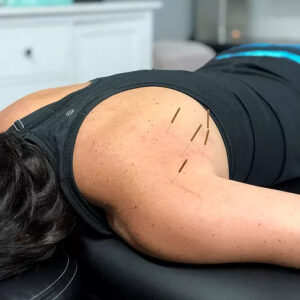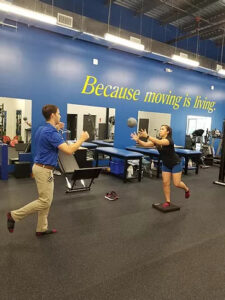
What Is Physical Therapy
Physical therapy helps people of all ages to improve their movement or function, which may be limited due to a health condition, injury, surgery, or pain. Physical therapists are the movement experts. They can use different techniques such as manual therapy, dry needling, and guided exercises to get people moving and functioning better again.
There are different types of physical therapy, including neurological, pediatric, geriatric, vestibular, women’s health (pelvic floor), cardiopulmonary, and orthopedic. Although orthopedic physical therapists can work with anyone, their main focus is on orthopedic conditions such as injuries, surgery, and pain. There are a wide range of orthopedic conditions seen in an orthopedic clinic that range from low back and knee pain to ankle sprains and shoulder impingement, as well as work-related injuries. Orthopedic physical therapists also help patients recover from surgeries including knee replacements, fractures, spinal surgery, and rotator cuff surgery.
Types of Physical Therapy
- Cardiopulmonary
- Neurological
- Pediatric
- Geriatric
- Vestibular
- Pelvic floor
- Orthopedic
“The goal of prescribing exercises is to teach you what to do so that you can continue to move/function better even after being discharged from therapy.”
When receiving physical therapy, your physical therapist will first do an initial evaluation on the body part and surrounding area that needs therapy. During the evaluation, your therapist will examine things like your range of motion, joint mobility, strength, and sometimes balance. They may also do special tests to help rule in or rule out specific conditions. Because all of your body parts are connected, your therapist will also check out areas above and below the body part in question to see if those regions are contributing to your problem. For example, if you are having knee pain, your therapist could examine your back, hips, and ankles and likely also look at your balance and how you walk. When examining the whole individual, instead of just one joint, you get better treatment, which means you get better faster.
Once the evaluation is finished, the therapist will come up with a plan of care with specific treatments to address your issues. One type of treatment that is evidence-based is manual therapy. Manual therapy consists of hands-on techniques (without devices or machines) including but not limited to soft tissue mobilization, joint mobilization, and manipulation that can improve patients’ pain and mobility. Your therapist may do dry needling (with your consent). Dry needling consists of inserting a thin monofilament needle into specific muscle(s) to improve your pain and/or function. And of course, your therapist will prescribe exercises that may include stretching, strengthening, and/or balance exercises. The goal of prescribing exercises is to teach you what to do so that you can continue to move/function better even after being discharged from therapy.
BY: livetomovept
News
COMMENTS: 4 Comments




Thanks for helping me understand that the professional will look above or beyond the area where there is an injury, since all of our body parts are connected. I will keep that in mind when I visit an orthopedic injury rehab facility this weekend. It’s to get my right knee checked after it has been having issues with my own body weight, and it also has issues with bending at a certain position. https://www.beatphysicaltherapy.com/orthopedic-rehab/laurel-md/
It’s great that you explained how a physical therapist evaluates your injury! A few days ago, my cousin had a car accident, and got several injuries at it! I believe my cousin will benefit from trying physical therapy to improve his recovery, so I’ll suggest it right away! Thank you for the advice on how a physical therapist will provide exercises for your injuries!https://www.fyzical.com/physical-therapy-services/concussion-testing-and-treatment
I’ve been struggling with shoulder pain ever since my car accident. It makes sense that I might want to get physical therapy done. That seems like a good way to ensure that I can finally get over this aching pain. http://www.riverbendpt.net/sports-rehabilitation
I love that you talked that the improvement of the function of your body is called physical therapy. I have a cousin who is an athlete that suffered an ankle injury, and he asked if I had any idea what would be the best treatment after the surgery. You did a great job explaining, I’ll be sure to tell him that consult a trusted physical therapist as they can provide proper treatment and rehab process for his injury. https://handsonnj.com/total-joint-rehab